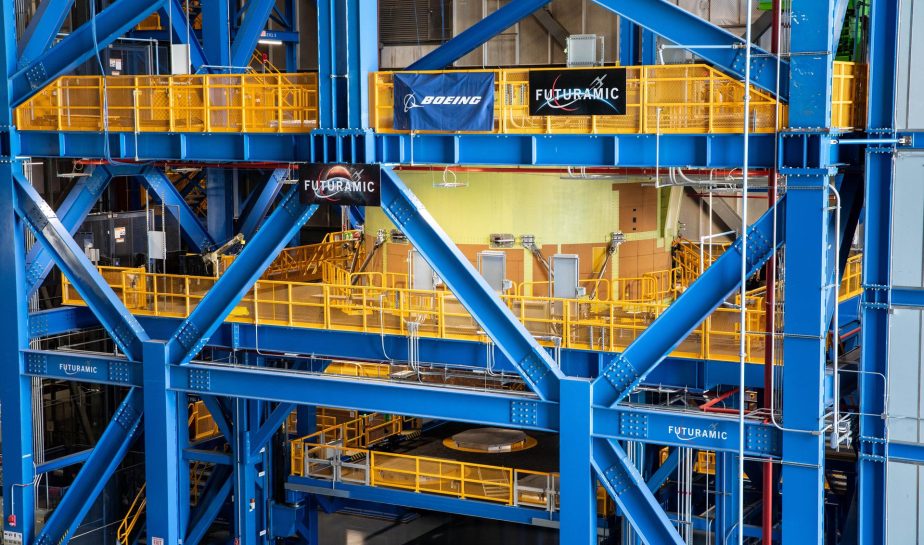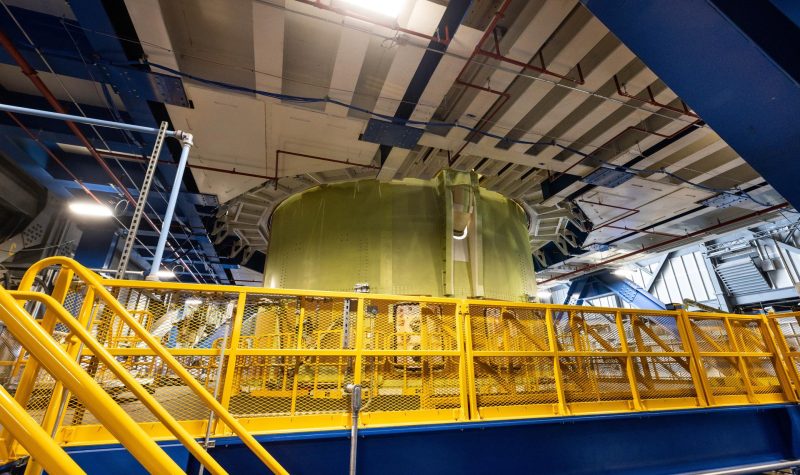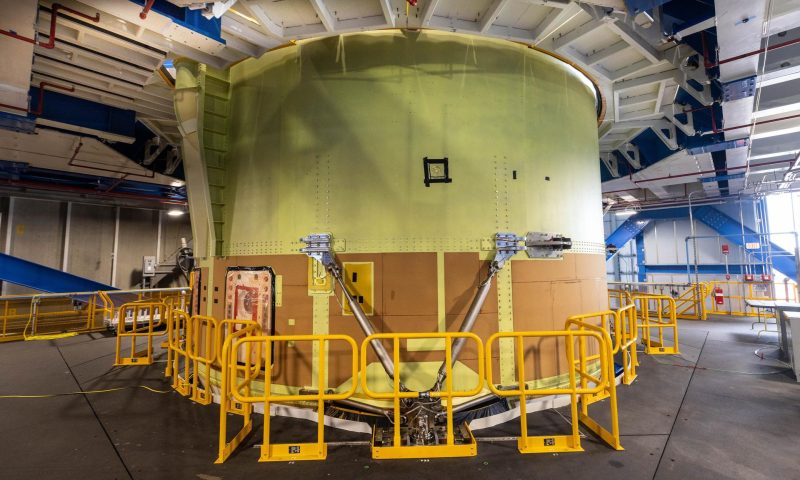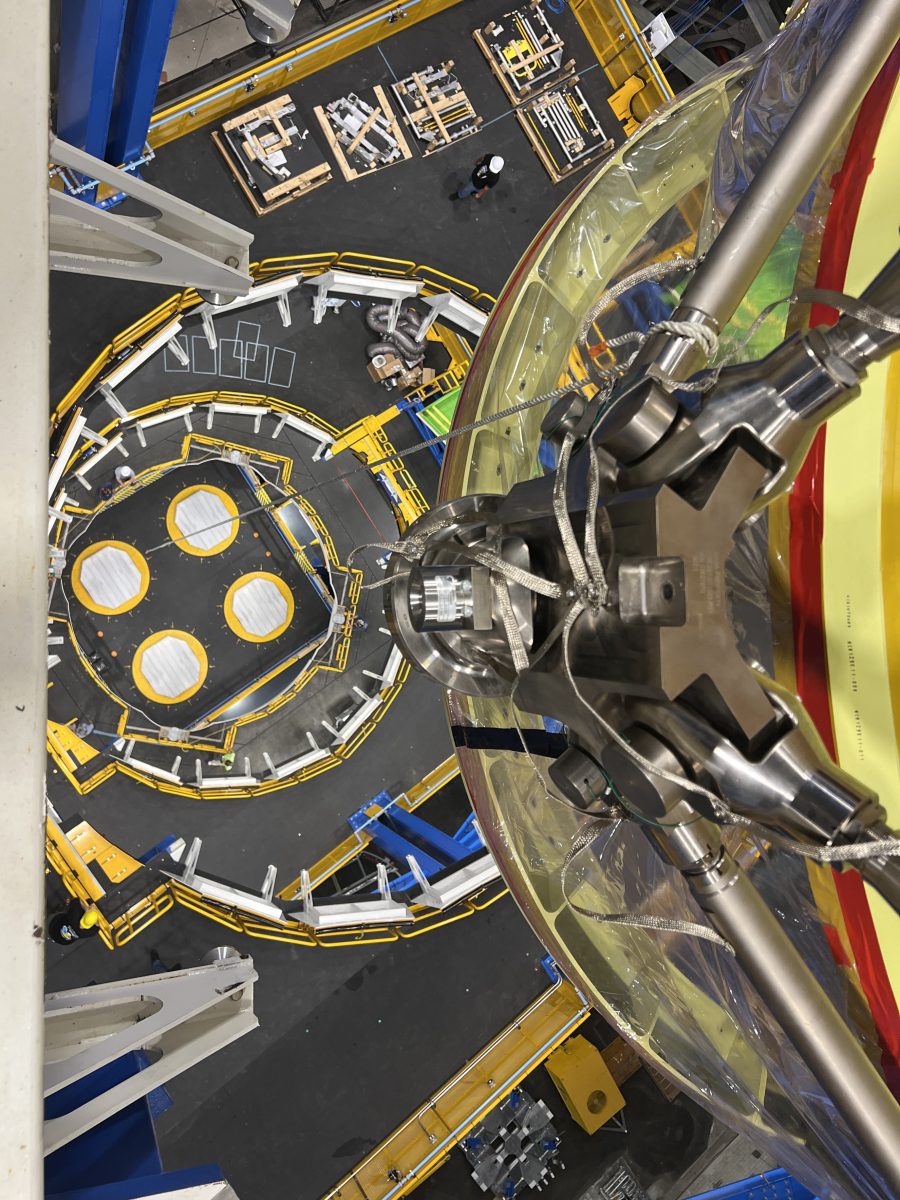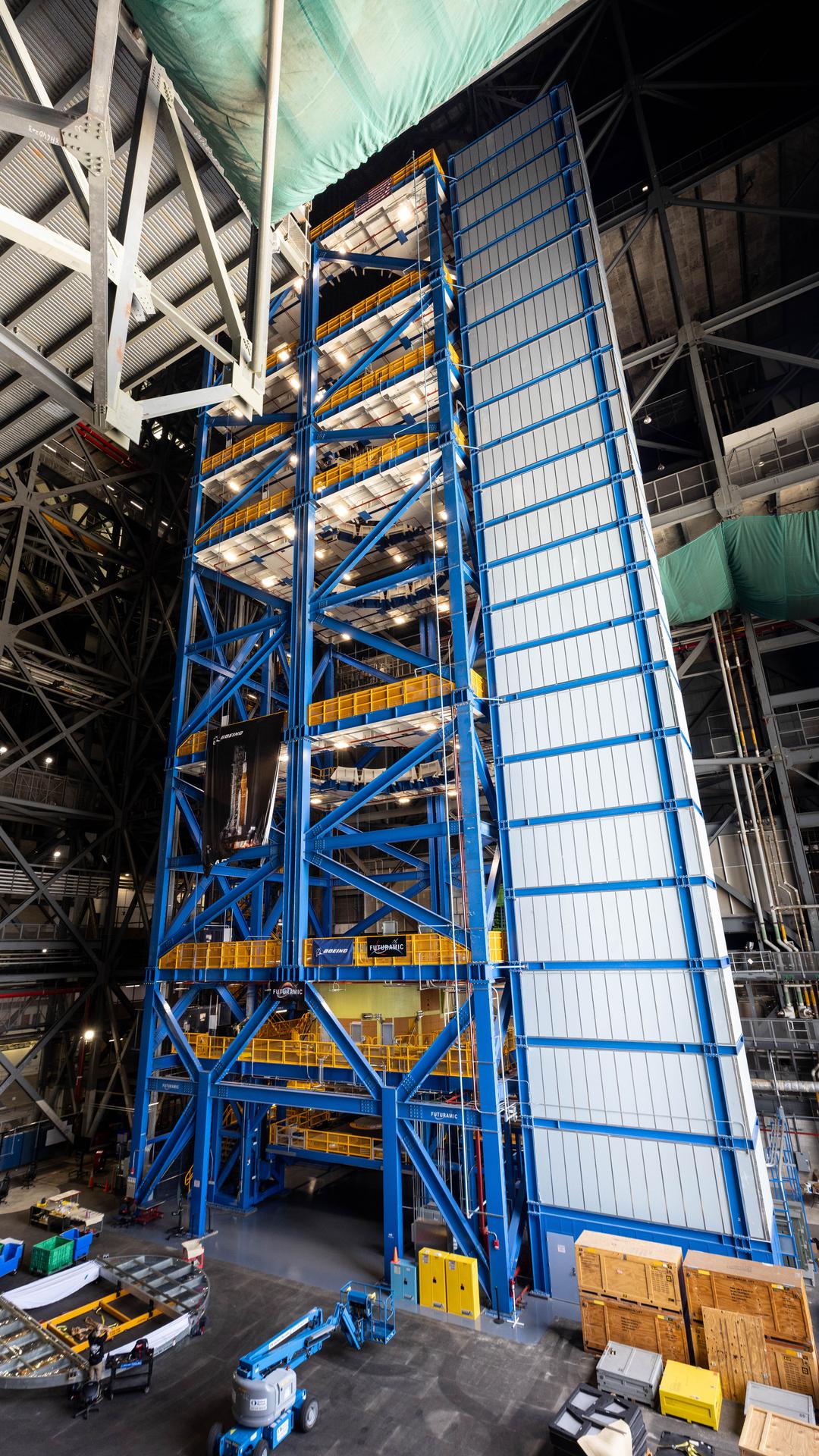On August 13, 2025, NASA teams at Kennedy Space Center successfully lifted and positioned the Artemis III Space Launch System (SLS) core stage engine section with its boat-tail inside the iconic Vehicle Assembly Building (VAB). Shown in High Bay 2, the hardware is now undergoing processing ahead of its integration with the rest of the Artemis III rocket. The engine section is among the most complex parts of the SLS, housing critical propulsion and structural systems that will help power astronauts on their journey to the Moon.
- Image credit: NASA / Cory Huston
- Image credit: NASA / Cory Huston
“Teams from Kennedy lift NASA’s integrated Artemis III SLS (Space Launch System) core stage engine section with its boat-tail inside the center’s Vehicle Assembly Building at NASA’s Kennedy Space Center in Florida on Wednesday, Aug. 13, 2025. Shown inside the facility’s High Bay 2 for processing, the engine section is one the most complex and intricate parts of the rocket stage that will help power the Artemis missions to the Moon.” – via NASA
Artemis III: A Step Closer to the Moon
According to NASA’s latest Artemis update, processing of Artemis III hardware has now officially begun, with multiple stages entering the VAB for integration. The rocket’s assembly marks the first steps toward launching astronauts on a mission that will land near the lunar South Pole, paving the way for a sustainable human presence on the Moon.
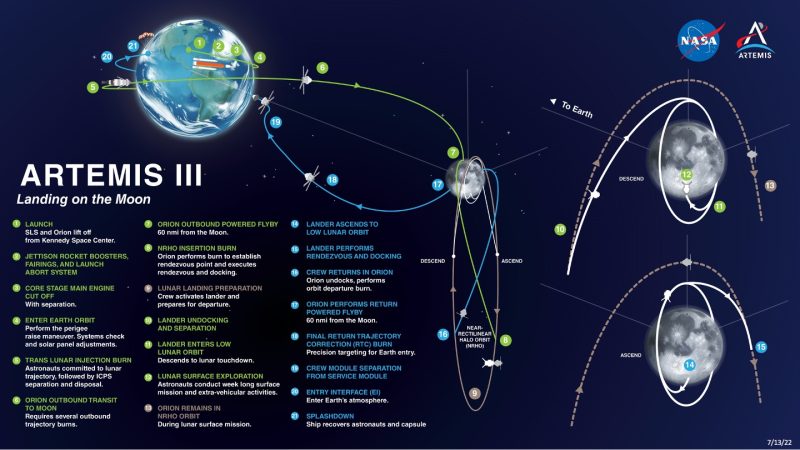
Artemis III will be humanity’s return to the lunar surface and NASA will make history by sending the first humans to the lunar South Pole region.
Role of Futuramic’s Aerospace Tooling
Futuramic’s Core Stage Vertical Integration Center (CSVIC) tooling, developed in collaboration with Boeing, is pivotal in this process. Installed in High Bay 2 at Kennedy, this specialized aerospace tooling has enabled vertical stacking of the core stage earlier than ever, reducing handling risks and improving overall integration safety.
Originally deployed for Artemis II, the CSVIC tooling facilitated the first vertical placement of a 212-foot core stage into High Bay 2 on December 11, 2024, providing NASA technicians and engineers with full 360-degree access to the stage.

